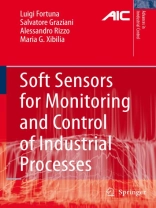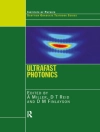focussed on the key steps in soft sensor design: data selection; model structure selection and model validation, respectively. Extensions to the basic steps of soft sensor design, namely soft sensor performance enhancement and the modifications needed to facilitate different industrial process applications follow in Chapter 7 and 8, respectively. Widening the applications range and role of soft sensors to fault detection and sensor validation configurations is dealt with in Chapter 9. A great strength of Soft Sensors for Monitoring and Control of Industrial Processes is the use, throughout the text, of a set of industrial case studies to demonstrate the successes and drawbacks of the different methods used to create soft sensor models. A number of different methods may be used in each separate step of the soft sensor design process and the industrial case studies are often used to provide explicit comparisons of the performance of these methods. The industrial control and process engineer will find these comparison exercises invaluable illustrations of the sort of results that might be found in industrial applications. The monograph also highlights the importance of using knowledge from industrial experts and from the existing industrial process literature. This is an important aspect of industrial control that is not very widely acknowledged or taught in control courses. Most industrial processes have already generated a significant experimental knowledge base and the control engineer should develop ways of tapping into this valuable resource when designing industrial control schemes.
Содержание
Soft Sensors in Industrial Applications.- Virtual Instruments and Soft Sensors.- Soft Sensor Design.- Selecting Data from Plant Database.- Choice of the Model Structure.- Model Validation.- Strategies to Improve Soft Sensor Performance.- Adapting Soft Sensors to Applications.- Fault Detection, Sensor Validation and Diagnosis.
Об авторе
Luigi Fortuna has been Professor of System Theory at the University of Catania since 1994. He has published more than 280 technical papers and is co-author of seven books including, for Springer, Soft Computing (1-85233-308-1, 2001, 280 pp, SC) and Microelectronics and Microsystems (1-85233-499-1, 2001, 222 pp, HC). He holds several USA patents. His scientific interests include automatic control, nonlinear science and complexity, chaos, cellular neural networks with applications in bioengineering. He has been an IEEE Fellow since 2000.
Salvatore Graziani received a M.S. degree in electronic engineering and a Ph.D. in electrical engineering, both from the Università degli Studi di Catania, Italy, in 1990 and 1994, respectively. In 1990 he joined the Dipartimento di Ingegneria Elettrica, Elettrica e dei Sistemi, Università di Catania, where he is an Associate Professor of Electric and Electronic Measurement and Instrumentation. His primary research interests lie in the field of sensors and actuators, signal processing, multisensor data fusion, neural networks, and smart sensors. He has co-authored several scientific papers and one book.
Maria Gabriella Xibilia holds an M.S. degree in electronic engineering and a Ph.D. in electrical engineering, both from the Università degli Studi di Catania, Italy, in 1991 and 1995, respectively. In 1998 she joined the Dipartimento di Matematica of the Università degli Studi di Messina, where she is an Assistant Professor of Automatic Control. Her primary research interests lie in the field of process control, system identification, soft computing and fault detection. She has coauthored several scientific papers and three books.












